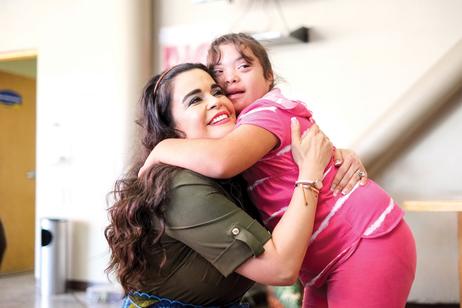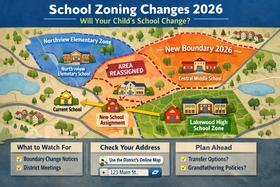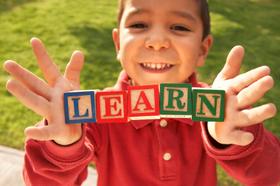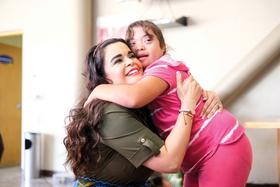The term “special” is typically used to describe something that is better or greater than the average. In terms of education, however, the term is often used to describe students who are different or differently abled. Special education focuses on helping children with disabilities learn and, just as every student is different, so are the various approaches to special education.
Parents and teachers have always had their work cut out for them when it comes to educating and caring for special needs students, but the COVID-19 pandemic has created new challenges that may last for years to come. In this article, we’ll discuss the effects of the COVID-19 pandemic on special education and provide useful information for both parents and teachers.
What is Special Education?
The term “special education” generally refers to a set of services provided to students who have unique learning needs. In terms of federal law, according to the Individuals with Disabilities Education Act (IDEA), however, special education is defined as: “Specially designed instruction, at no cost to parents, to meet the unique needs of a child with a disability.”
In order to qualify for special education services, students must have an identified disability that affects their ability to learn. Eligible disabilities may include the following:
- Intellectual disabilities
- Speech or language impairment
- Hearing impairment
- Visual impairment
- Serious emotional disturbance
- Traumatic brain injury
- Orthopedic impairments
- Autism spectrum disorder
- Developmental delay
- Specific learning disabilities
Federal law requires schools to provide an appropriate education for all of their students with disabilities, regardless their disability or its severity. It also requires that six principles be provided to all students who qualify for special education services. These principles include the following:
- Free and Appropriate Public Education (FAPE) – This principle states that all children with disabilities are entitled to a public education (at no cost) that is designed to meet the child’s individual needs. Students should be provided access to the general education curriculum and receive services in accordance with their IEP.
- Nondiscriminatory Identification and Evaluation – Public schools are required to use nonbiased methods to identify students with disabilities to ensure that there is no discrimination based on race, culture, or native language. Evaluation instruments must use the child’s native language.
- Individualized Education Program (IEP) – This is a document that forms the foundation of special education, describing in detail the services to be provided to each individual student. It includes a description of the student’s current academic level and information on how the student’s disability affects their performance. It also outlines the adaptations and accommodations that are to be made along with learning goals and objectives for the year.
- Least Restrictive Environment (LRE) – This describes the setting in which students with disabilities receive special education services. Generally speaking, children will be educated alongside students without disabilities as much as is appropriate. It may include part- or full-time special education in a resource room, a self-contained classroom, or community setting.
- Parent Participation – Parents have the right to be a member of any group that makes decisions regarding their child’s placement and LRE. They also have the right to access planning and evaluation materials and should be invited to attend IEP meetings.
- Due Process Safeguards – These are the protections given to children and their parents under IDEA. Safeguards may include obtaining parental consent for placement, confidentiality of the child’s records, independent evaluation (at no cost to the parent), and due process hearings in times when the school and the parent may disagree.
Because every child is unique, special education is not a “one size fits all” approach. Furthermore, federal law requires that children who receive special education spend as much time as possible in the same classrooms as other children. This requires parents and teachers to be involved in the student’s education to ensure they learn at an appropriate rate.
The Impact of the Pandemic on Special Needs Students
According to data collected by the Pew Research Center, there were nearly 7 million disabled students in the United States at the end of the 2017-18 school year. This group of special needs students has grown 11% since the 2000-01 school year. While the IDEA guarantees a certain quality of education for disabled students aged 3 to 21, the COVID-19 pandemic has created some unique challenges that won’t soon be overcome. Millions of students across the country shifted to online learning and the transition was particularly challenging for special needs students.
A survey of Americans aged 18 and older revealed that disabled Americans feel less comfortable using technology than their non-disabled counterparts. Additionally, disabled adults are less likely to express a high level of confidence in their ability to use the Internet as well as other communication devices (39% versus 65% of all adults). Compared to 8% of non-disabled adults, 23% of disabled adults say they never go on the Internet at all.
If disabled adults struggle to such a significant degree with technology, what does it mean for children with disabilities?
Many parents of disabled children find that maintaining a structured routine helps. Unfortunately, the chaos of the COVID-19 pandemic destroyed existing structures for special needs students both in-school and at-home. With the majority of schools transitioning to remote learning, it has fallen on the parents to establish the kind of routine their children would have normally had in school. Like most parents of school-age children, the parents of special needs children have undergone a period of trial-and-error to find out which methods work and which do not.
It wasn’t just parents who struggled, however. When schools first closed down, the federal government declared that it wouldn’t offer any special education waivers. Essentially, that meant that everything stipulated under IDEA was still in place, despite the increased difficulty schools faced in implementing it.
Some states made their own adjustments like the Massachusetts Department of Elementary and Secondary Education (formerly the Massachusetts Department of Education). They decided that schools could provide a modification to their IEPs in the form of a remote learning program that was to be submitted to families in writing. Unlike the traditional IEP, however, these remote learning plans didn’t require a sign-off from parents. Unfortunately, many schools followed a similar trajectory in failing to provide services to special needs students if they couldn’t do it in the same way as regular students.
Students who were new to the special education system may have faced even greater challenges. Schools are required to evaluate special needs children within 30 school days and to meet with the family after another 15 days. During the spring quarantine, however, schools did little or no testing which has created a huge backlog. Not only have these students missed out on these evaluations, but they’ve missed out on months of special education services.
Under IDEA, special needs students are entitled to these services which means families are entitled to compensatory services for the special education students didn’t receive during the pandemic. Schools are still working out the details for what this compensation will look like.
The Upside of Remote Learning
While many special needs students have struggled to adapt to remote learning, the experience has been a very positive one for others. Many students with disabilities have found that remote learning is more accessible for their learning style and, for some, it is liberating in a way.
A recent Hechinger Report tells the story of a seventh grader named John who has both a language disorder and ADHD. For John, learning came easier in a remote setting than it ever had in school. When asked about potentially continuing remote learning, John told the report, “I bet I could do so much better, and I could concentrate better.” John’s mother saw a difference as well, commenting, “He misses his friends, obviously, but at the same time, I can tell there was a huge change in his stress levels, and he was able to concentrate on his schoolwork.”
The shift to remote learning has been difficult for teachers and students alike. It has been particularly difficult for children of color and kids without access to technology at home. For a small number of students, however, freedom from the distractions that come with in-person learning has been a blessing. This has led some educators to wonder how these experiences can be applied to improve in-person education in the future for all students.
A Look at Special Education Statistics
As the world recovers from the COVID-19 pandemic, many industries find themselves facing major changes going forward – the education industry included. Though we may not yet fully understand the impact of the pandemic on this generation of students, new data will continue to inform the decisions of policymakers and educators. Statistics on special education will be important as well.
Here are a few statistics on special education in the U.S.:
- The most common disability for American students is a “specific learning disability” like dyslexia. In the 2017-18 school year, roughly one-third (34%) of disabled students had a specific learning disability, 20% a speech/language impairment, and 14% a chronic health problem.
- Autistic students account for about 10% of the nation’s disabled school-age children, compared to just 1.5% two decades earlier. In the same time period, students with specific learning disabilities declined from 45% to 34%.
- The percentage of special education students varies greatly from state to state. The highest rates are found in the northeast, particularly Pennsylvania (18.6%), Maine (18.4%), and Massachusetts (18%). The lowest numbers are found in Texas (9.2%), Hawaii (10.6%), and Idaho (11%). All except 15 states declined in numbers between 2000 and 2018.
- The demographics of special education students mirror the student population overall but there are some differences in gender. Roughly two-thirds of special needs students are male (67%) while overall, student enrollment is fairly evenly split between boys and girls.
In 2018, an article published by U.S. News reported that the number of students receiving special education services is on the rise, citing 13% of all students. This is according to a Department of Education report, titled The Condition of Education 2018. According to this report, students receiving special education rose from 6.6 million to 6.7 million from the 2014-15 school year to the 2015-16 school year. Though the increase is only slight from the previous year, the lead author of the report notes that it is within the range of what they’ve seen in previous years.
Tips for Parents of Special Needs Children
Though the country is slowly rising out of the pandemic, this generation of students will be feeling the effects for years to come. Students of color and special needs children may be the last to fully recover, though many would argue that the last thing that is needed is a complete return to “normal.” The pandemic may have been challenging (disproportionately so for some groups), but it also highlighted areas where change is needed most which will hopefully inspire policymakers to take action.
As the parent of a special needs child, you may find yourself playing the role of teacher for a little while longer. Even though many schools have reopened for in-person education or plan to in the fall, it could be a long summer and the next school year won’t be without hiccups.
To give you an idea of how the pandemic has affected special needs students in particular, consider the results of a survey conducted by the Child Neurology Foundation of nearly 2,000 families. Parents of special needs children reported an increase in tantrums and other disruptions – 81% reported aggressive outbursts happening at least once a month. The stress of the pandemic has been hard on everyone, but children – perhaps especially children with disabilities – may not have the capacity to understand what is happening or why.
Dr. Tanjala Gibson, MD, FAAN, the director of the Neurodevelopmental Disabilities Clinic at the Center for Developmental Disabilities, suggests parents of special needs children employ these strategies:
- Prioritize safety. Even when your child is in the middle of a meltdown, make sure both of you are safe. If necessary, take steps to keep your child from hurting themselves or other without restricting his or her ability to express their feelings.
- Stop talking. When you’re in a battle with your child, sometimes the best thing you can do is stop talking. Many children become cognitively overloaded and, particularly in the middle of a tantrum, the last thing they want to do is listen. Use fewer words if you can or stop talking altogether to give your child time to calm down.
- Mimic good behavior. Your child feeds off your energy and your mood, so try to keep yourself calm as much as possible. When your child is throwing a tantrum, try using soothing motions like gentle physical touch or take your child for a calming walk. Sometimes the best thing you can do is leave them alone to work through their feelings.
- Offer forgiveness. Never punish your child for feeling overwhelmed or throwing a tantrum. Instead, try to talk to your child after it’s over to figure out the source of the problem so you can prevent it from happening again in the future. Ask your child how you can help.
- Help your child understand. Many children with disabilities resist doing things if they don’t understand why they’re doing them. Take advantage of resources and learning tools to help your child understand things in their own terms.
- Get support. Being the parent of a special needs child can feel isolating at times, so find support wherever you can. Join a parents group, even if it’s only online, and network with other parents to share helpful resources and relevant experiences.
- Engage in self-care. Everyone deserves a little time to themselves now and then, though it may be difficult for you to find spare time when you’re the parent of a special needs child. Take advantage of friends and family to get the time you need to take care of yourself. You won’t be able to give your child your best if you’re not taking care of your own needs.
Being a parent or teacher to a special needs child is always a challenge, but the COVID-19 pandemic has thrown a wrench in the entire public education system. While schools have started to reopen and resume a more-or-less normal mode of education, special needs students still face lasting challenges and may continue to face them for years to come.














